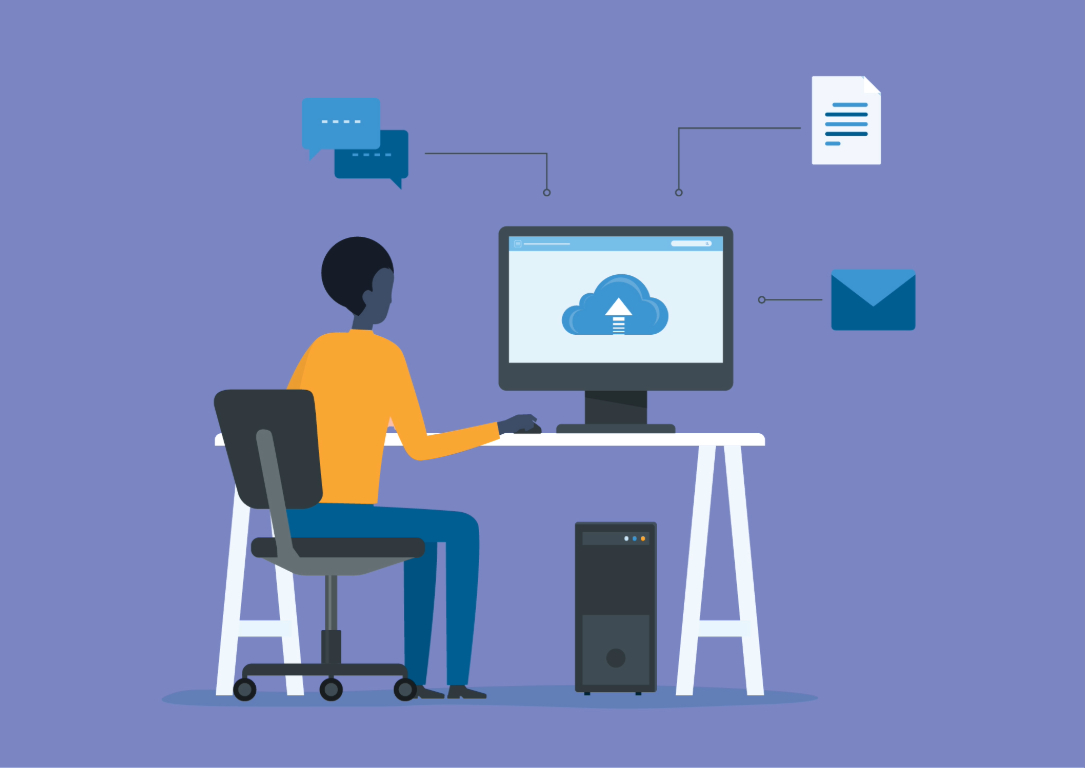Strategies for Creating Resilient IT Teams in a Changing Climate
Table of Contents
The IT Team Evolution
The field of information technology (IT) is a constantly evolving landscape that requires teams to be agile, adaptable, and resilient to thrive. With rapid advancements in technology, changing business requirements, and dynamic organizational landscapes, IT teams need to possess the ability to recover from setbacks, adapt to changes, and thrive in the face of challenges. Resilience is a critical trait for IT teams to possess in order to ensure their success in this ever-changing environment.
We will delve into strategies that can help IT leaders create resilient teams that can effectively navigate the changing IT landscape with agility and efficiency. These strategies are essential for organizations to stay competitive, address unexpected challenges, and deliver optimal results. Let’s explore each strategy in more detail.
Understanding Resilience in IT Teams:
Resilience is a critical trait for IT teams to cope with the constantly changing climate of the information technology industry. Resilient IT teams possess certain characteristics that set them apart from others. They are flexible and adaptable, able to quickly adjust to new technologies, evolving business requirements, and dynamic organizational landscapes. They have a growth mindset, viewing challenges as opportunities for learning and improvement rather than obstacles. Resilient IT teams are also open to continuous learning, actively seeking opportunities to enhance their skills and knowledge to stay ahead of the curve. Effective communication and collaboration are key elements of resilient IT teams. They establish open channels of communication, both vertically and horizontally, within the team and across departments. They collaborate effectively, sharing ideas, feedback, and information, and working together to find innovative solutions to complex IT challenges.
Transparent communication promotes trust and accountability among team members, enabling them to make informed decisions and address challenges proactively. Resilient IT teams also foster a positive and inclusive team culture. They create an environment where team members feel empowered to express their opinions, share their ideas, and collaborate openly without fear of judgment. They value diversity, equity, and inclusion, recognizing that different perspectives and experiences contribute to creativity and innovation. A positive team culture encourages experimentation, creativity, and continuous improvement, driving the team to explore new approaches and solutions.
Team and Strategy
Strategy 1: Foster a Growth Mindset
The foundation of resilience in IT teams is a growth mindset, which is the belief that skills and abilities can be developed through dedication and effort. Encouraging a growth mindset among team members and across the organization is crucial for building resilient IT teams. Leaders play a key role in promoting a growth mindset by emphasizing the importance of continuous learning, experimentation, and embracing challenges as opportunities for growth. Leaders should create a culture that encourages team members to step out of their comfort zones, take calculated risks, and view failures as learning opportunities rather than setbacks.
Team members should be encouraged to seek feedback, learn from mistakes, and constantly strive for improvement. Leaders should also provide resources and opportunities for skill development, such as training programs, workshops, and mentoring, to support the growth mindset of IT teams. Embracing a growth mindset enables IT teams to develop the resilience needed to adapt and thrive in a changing climate. Resilient IT teams view challenges and setbacks as opportunities to learn, grow, and improve. They are not afraid to try new approaches or take calculated risks, as they believe in their ability to learn and evolve. A growth mindset encourages creativity, innovation, and continuous improvement, as team members are willing to explore new ideas, experiment with different solutions, and learn from both successes and failures.
Strategy 2: Encourage Collaboration and Communication
Effective collaboration and communication are essential drivers of resilience in IT teams. When team members work together in a collaborative environment, they can leverage diverse skills, perspectives, and experiences to tackle challenges and find innovative solutions. IT leaders should create a culture that encourages open and transparent communication, active listening, and constructive feedback.
One way to promote collaboration and communication is through regular team meetings. Team meetings provide an opportunity for team members to come together, share updates, discuss challenges, and brainstorm solutions. These meetings should be inclusive, allowing all team members to contribute their insights and ideas. In addition, cross-functional collaboration can also be encouraged, as it allows team members from different departments or areas of expertise to collaborate and bring diverse perspectives to problem-solving.
Another effective way to promote collaboration and communication is through the use of collaboration tools. These tools can include project management software, communication platforms, and knowledge-sharing platforms. These tools facilitate communication and knowledge sharing, allowing team members to collaborate in real time, share information, and document decisions and actions taken. IT leaders should ensure that the team is trained and proficient in using these tools to maximize their effectiveness.
Strategy 3: Provide Opportunities for Continuous Learning and Development
In a constantly evolving IT landscape, continuous learning and development are crucial for building resilient IT teams. IT leaders should prioritize investing in training and development programs that enable team members to acquire new skills, stay updated with the latest technological advancements, and enhance their expertise. This can include workshops, training sessions, certifications, mentorship programs, and access to online resources. IT leaders should also encourage team members to take ownership of their own professional growth and development. This involves setting personal learning goals, seeking feedback from peers and mentors, and actively participating in learning opportunities. By fostering a culture of continuous learning, IT teams can stay agile, adaptable, and resilient in the face of changing business requirements and technological advancements.
Mentorship programs can be particularly effective in promoting continuous learning and development within IT teams. Pairing team members with experienced mentors who can provide guidance, support, and insights can accelerate the learning process and help team members stay updated with industry trends and best practices. Mentors can also serve as role models and sources of inspiration, encouraging team members to continuously strive for improvement and growth. In addition to formal training programs, IT leaders should also encourage a culture of self-directed learning. This can involve providing access to online resources, such as tutorials, documentation, and industry publications, and promoting knowledge-sharing among team members. Collaborative learning activities, such as brown bag sessions or lunch-and-learn sessions, where team members can share their expertise and insights, can also be valuable in fostering a culture of continuous learning and development.
Strategy 4: Embrace Agile and Adaptive Approaches
Agile methodologies and adaptive approaches are highly effective for building resilience in IT teams. These methodologies, such as Scrum or Kanban, provide a framework for iterative and incremental development, allowing teams to respond to changing requirements and deliver value quickly. Adaptive approaches, such as DevOps or Lean IT, promote collaboration, automation, and continuous improvement, enabling teams to adapt to changing technology landscapes and deliver high-quality solutions.
IT leaders should actively encourage the adoption of agile and adaptive approaches within their teams, providing the necessary training, tools, and resources. Team members should be empowered to make decisions, take ownership of their work, and continuously improve their skills and processes. This includes fostering a culture of experimentation and learning from failures, encouraging team members to share their insights and perspectives, and promoting cross-functional collaboration and communication.
By embracing agile and adaptive approaches, IT teams can become more resilient in the face of changing climates in the industry. These methodologies enable teams to quickly pivot, iterate, and optimize their work to meet evolving business needs. The emphasis on collaboration, continuous improvement, and iterative delivery allows teams to respond effectively to changes in requirements, technology, and market dynamics. Additionally, the empowerment of team members fosters a sense of ownership and accountability, driving them to continuously enhance their skills and processes to deliver high-quality solutions.
Strategy 5: Foster a Positive and Inclusive Team Culture
Team culture plays a pivotal role in building resilient IT teams. A positive and inclusive team culture creates an environment of trust, collaboration, and psychological safety among team members. IT leaders should proactively cultivate a culture that encourages open communication, respect for diverse opinions, and recognition of team members’ contributions. Creating an inclusive environment that values diversity, equity, and inclusion is also crucial, where team members feel empowered to bring their authentic selves to work without fear of discrimination or bias.
Regular team-building activities, social events, and recognition programs can be implemented to promote a positive team culture. These activities can help foster camaraderie, collaboration, and mutual support among team members, creating a cohesive and resilient team. IT leaders should also ensure that team members have access to resources and opportunities for personal and professional growth, and that their achievements and contributions are acknowledged and appreciated. By fostering a positive and inclusive team culture, IT teams can build resilience by leveraging the collective strengths and talents of their members.
A culture that values open communication, diverse perspectives, and mutual respect can lead to increased innovation, creativity, and problem-solving skills within the team. Moreover, an inclusive environment where team members feel supported and valued can enhance their engagement, job satisfaction, and overall well-being, leading to higher retention rates and better team performance.
Bottom Line
In a rapidly changing IT landscape, creating resilient teams is essential for organizations to stay competitive and adapt to evolving business requirements. Strategies such as fostering a growth mindset, encouraging collaboration and communication, providing opportunities for continuous learning and development, embracing agile and adaptive approaches, and fostering a positive and inclusive team culture can help build resilience in IT teams. By implementing these strategies, IT leaders can empower their teams to navigate the changing climate of the industry, overcome challenges, and thrive in the face of uncertainty.
In conclusion, creating high-performing IT teams in a changing climate requires a combination of strategies that foster resilience, adaptability, and collaboration. By fostering a growth mindset, encouraging effective communication, providing opportunities for continuous learning and development, embracing agile and adaptive approaches, and fostering a positive and inclusive team culture, IT teams can build the resilience needed to thrive in a dynamic IT landscape. By investing in the development of resilient IT teams, organizations can ensure that their IT departments are well-equipped to navigate changing business requirements, address unexpected challenges, and deliver optimal results. With the right strategies in place, organizations can create high-performing IT teams that are ready to excel in a changing climate.


